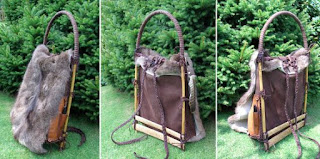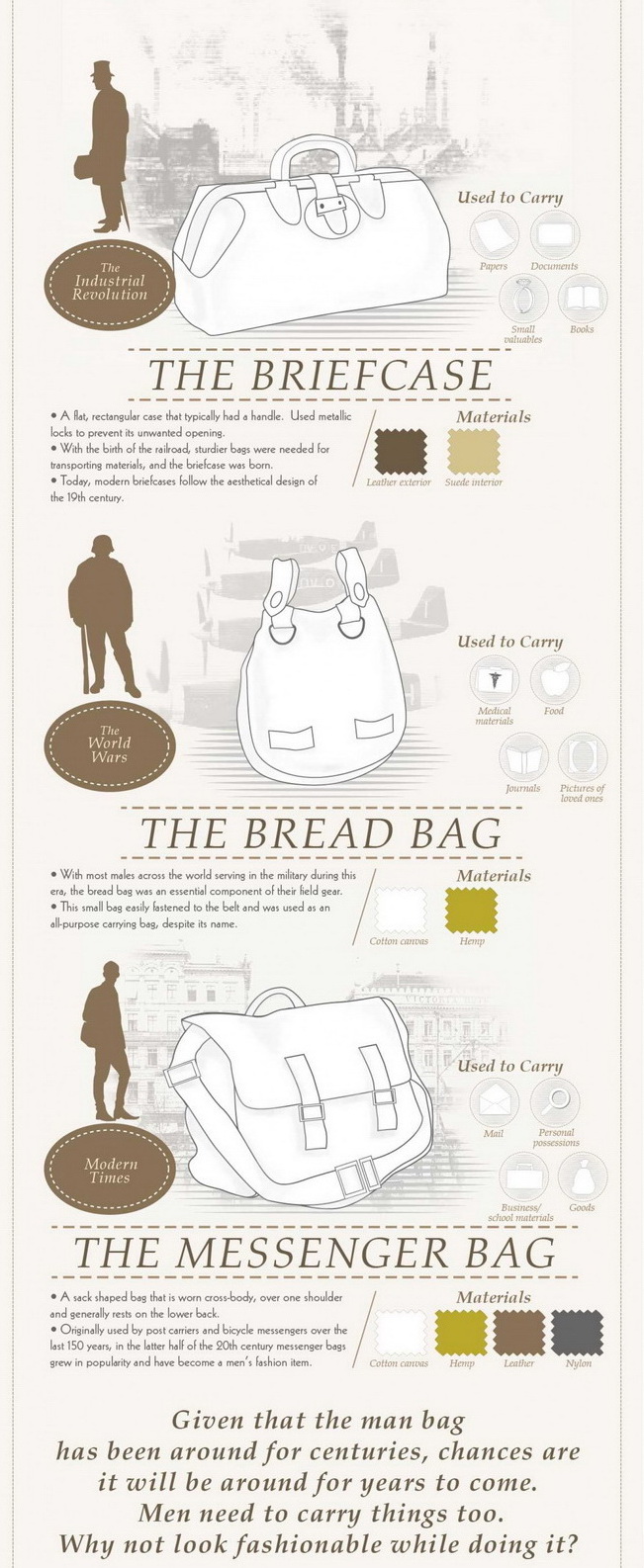T.R.A.C.S at Timothy Plaza on River Island
Saturday, February 27, 2016
Little Green Bag
"Little Green Bag" is a 1969 song written by
Dutch musicians Jan Visser and George Baker (born Hans Bouwens), and recorded
by the George Baker Selection at the band's own expense. The track was released
as the George Baker Selection's debut single by Dutch label, Negram, with the
B-side being "Pretty Little Dreamer".
The track's original title was "Little
Greenback", namely, the US dollar. The first line of the lyric,
"Lookin' back on the track for a little greenback", has three rhymes
(underlined); "green bag" would not be a true rhyme. However, the
single was given the erroneous title, "Little Green Bag", which some
took to be a "bag of marijuana". The "Little Green Bag"
title was then retained for all subsequently released versions of the single as
well as the group's 1970 debut album, also titled Little Green Bag. This is an
example of a mondegreen.
The song's single peaked at #9 on the Dutch Top 40
singles chart and #3 in Belgium. In the United States, the single reached #16
in the summer of 1970 on the Cashbox chart and #21 on the US Billboard Top 100.
In 1992, when the song was used in the Quentin Tarantino film, Reservoir Dogs,
it became an international cult classic. Also in 1992, the song reached #1 in
Japan after being used in a Japanese whiskey commercial.
Handbag
A handbag, also purse, or pouch in American English,
is a handled medium-to-large bag that is often fashionably designed, typically
used by women, to hold personal items.
"Purse" or "handbag" or
"pouch"
The term "purse" originally referred to a
small bag for holding coins. In British English, it is still used to refer to a
small coin bag. A "handbag" is a larger accessory that holds objects
beyond currency, such as a woman's personal items. American English typically
uses the terms purse and handbag interchangeably. The term handbag began
appearing in the early 1900s. Initially, it was most often used to refer to
men's hand-luggage. Women's bags grew larger and more complex during this
period, and the term was attached to the women's accessory. Handbags are valued
for their stylishness as visual accessories as well as for their function.
The verb "handbagging" in the meaning of
"treating ruthlessly" comes from Margaret Thatcher's habit of pulling
scraps of paper out of her handbag in meetings and reading aloud the comments she
had written on them.
Men's bags
 Men once carried coin purses, and the oldest known
purse dates back more than 5000 years, and was worn by a man, Ötzi the Iceman.
In early Modern Europe, when women's fashions moved in the direction of using
small ornamental purses—which evolved into handbags—men's fashions were moving
in another direction. Men's trousers replaced men's breeches during the course
of the 18th and 19th centuries, and pockets were incorporated in the loose,
heavy material. This enabled man to continue carrying coins, and then paper
currency, in small leather wallets. Men's pockets were plentiful in 19th
century and 20th century trousers and coats, to carry an ever-increasing number
of possessions, such as pipes, matches, pocketknives, and so on, and they were
an item frequently mended by their wives. Women, on the other hand, have shown
a strong demand for larger handbags that carry more items for everyday use.
Men once carried coin purses, and the oldest known
purse dates back more than 5000 years, and was worn by a man, Ötzi the Iceman.
In early Modern Europe, when women's fashions moved in the direction of using
small ornamental purses—which evolved into handbags—men's fashions were moving
in another direction. Men's trousers replaced men's breeches during the course
of the 18th and 19th centuries, and pockets were incorporated in the loose,
heavy material. This enabled man to continue carrying coins, and then paper
currency, in small leather wallets. Men's pockets were plentiful in 19th
century and 20th century trousers and coats, to carry an ever-increasing number
of possessions, such as pipes, matches, pocketknives, and so on, and they were
an item frequently mended by their wives. Women, on the other hand, have shown
a strong demand for larger handbags that carry more items for everyday use. Men's purses were revived by designers in the 1970s in
Europe. Since the 1990s, designers have
marketed a more diverse range of accessory bags for men. The names man-purse
and murse have been used. The designs are typically variations on backpacks or
messenger bags, and have either a masculine or a more unisex appearance,
although they are often more streamlined than a backpack and less bulky than a
briefcase. These bags are often called messenger bags or organizer bags. The
leather satchel is also common. Demand is strong after several years of
popularity, possibly supported by the growing range of modern electronic
devices men carry with them. Men's designer bags are produced by well-known
companies such as Prada, Louis Vuitton, Coach, and Bottega Veneta in a variety
of shapes and sizes. The global men's bag and small leather goods trade is a $4
billion a year industry. Sales of men's accessories including
"holdall" bags are increasing in North America.
Men's purses were revived by designers in the 1970s in
Europe. Since the 1990s, designers have
marketed a more diverse range of accessory bags for men. The names man-purse
and murse have been used. The designs are typically variations on backpacks or
messenger bags, and have either a masculine or a more unisex appearance,
although they are often more streamlined than a backpack and less bulky than a
briefcase. These bags are often called messenger bags or organizer bags. The
leather satchel is also common. Demand is strong after several years of
popularity, possibly supported by the growing range of modern electronic
devices men carry with them. Men's designer bags are produced by well-known
companies such as Prada, Louis Vuitton, Coach, and Bottega Veneta in a variety
of shapes and sizes. The global men's bag and small leather goods trade is a $4
billion a year industry. Sales of men's accessories including
"holdall" bags are increasing in North America.Louis Vuitton
 Louis Vuitton Malletier, commonly referred to as Louis
Vuitton, or shortened to LV, is a French fashion house founded in 1854 by Louis
Vuitton. The label's LV monogram appears on most of its products, ranging from
luxury trunks and leather goods to ready-to-wear, shoes, watches, jewelry,
accessories, sunglasses and books. Louis Vuitton is one of the world's leading
international fashion houses; it sells its products through standalone
boutiques, lease departments in high-end department stores, and through the
e-commerce section of its website. For six consecutive years (2006–2012), Louis
Vuitton was named the world's most valuable luxury brand. 2012 valuation was
US$25.9 billion. Year 2013 valuation of the brand was US$28.4 billion with a
sales of US$9.4 billion. The company operates in 50 countries with more than
460 stores worldwide.
Louis Vuitton Malletier, commonly referred to as Louis
Vuitton, or shortened to LV, is a French fashion house founded in 1854 by Louis
Vuitton. The label's LV monogram appears on most of its products, ranging from
luxury trunks and leather goods to ready-to-wear, shoes, watches, jewelry,
accessories, sunglasses and books. Louis Vuitton is one of the world's leading
international fashion houses; it sells its products through standalone
boutiques, lease departments in high-end department stores, and through the
e-commerce section of its website. For six consecutive years (2006–2012), Louis
Vuitton was named the world's most valuable luxury brand. 2012 valuation was
US$25.9 billion. Year 2013 valuation of the brand was US$28.4 billion with a
sales of US$9.4 billion. The company operates in 50 countries with more than
460 stores worldwide.
Louis Vuitton (designer)
 Louis Vuitton (4 August 1821 – 27 February 1892) was a
French businessman. He was the founder of the Louis Vuitton brand of leather
goods now owned by LVMH. Prior to this, he had been appointed as trunk-maker to
Empress Eugénie de Montijo, wife of Napoleon III.
Louis Vuitton (4 August 1821 – 27 February 1892) was a
French businessman. He was the founder of the Louis Vuitton brand of leather
goods now owned by LVMH. Prior to this, he had been appointed as trunk-maker to
Empress Eugénie de Montijo, wife of Napoleon III.
Early life
Vuitton was born on 4 August 1821 in Anchay in the Jura
region in Eastern France. Descended from a long-established working-class
family, Vuitton's ancestors were joiners, carpenters, farmers and milliners.
His father, Xavier Vuitton, was a farmer, and his mother, Corinne Gaillard, was
a milliner. Vuitton's mother died when he was only 10 years old, and his father
soon followed.
Work and career
On the first day of tolerable weather in the spring of
1835, at the age of 13, Vuitton left home alone and on foot, bound for Paris.
He traveled for more than two years, taking odd jobs to feed himself along the
way and staying wherever he could find shelter, as he walked the 292-mile trek
from his native Anchay to Paris. He arrived in 1837, at the age of 16. While
there was widespread poverty in Paris the city was also being transformed by
the Industrial revolution. Vuitton was taken on as an apprentice in the
workshop of a successful box-maker and packer named Monsieur Marechal. In 19th-century
Europe, box-making and packing was a highly respectable and urbane craft. A
box-maker and packer custom-made all boxes to fit the goods they stored and
personally loaded and unloaded the boxes. It took Vuitton only a few years to
stake out a reputation amongst Paris's fashionable class as one of the city's
premier practitioners of his new craft.
In 1854, Vuitton married 17-year-old Clemence-Emilie
Parriaux. Shortly after he left Marechal's shop and opened his own box-making
and packing workshop in Paris. Outside the shop a sign hung reading
"Securely packs the most fragile objects. Specializing in packing
fashions."
In 1858, four years after opening his own shop, Vuitton
debuted an entirely new trunk. Instead of leather, it was made of a gray canvas
that was lighter, more durable and more impervious to water and odors. However,
the key selling point was that unlike all previous trunks, which were
dome-shaped, Vuitton's trunks were rectangular—making them stackable and far
more convenient for shipping via new means of transport like the railroad and
steamship. Most commentators consider Vuitton's trunk the birth of modern
luggage.
The trunks proved an immediate commercial success, and advances
in transportation and the expansion of travel placed an increasing demand for
Vuitton's trunks. In 1859, to fulfill the requests placed for his luggage, he
expanded into a larger workshop in Asnieres, a village outside Paris. Business
was booming, and Vuitton received personal orders not only from French royalty
but also from Isma'il Pasha, the Khedive of Egypt.
After the re-establishment of the French Empire under
Napoleon III, Vuitton was hired as personal box maker and packer to the Empress
of France, Spanish countess Eugenie de Montijo. She charged him with
"packing the most beautiful clothes in an exquisite way." De Montijo
provided Vuitton with a gateway other elite and royal clients who provided him
with work for the rest of his career.
He continued to work until his death at the age of 70 on
27 February 1892. After his death, his son Georges Vuitton took over control of
the company.
Friday, February 26, 2016
US POSTAL SERVICE PARTY at T.R.A.C.S
Saturday, February 20, 2016
Friday, February 19, 2016
The mail or post
is a system for physically transporting documents and other small packages, as
well as a term for the postcards, letters, and parcels themselves. A postal
service can be private or public, though many governments place restrictions on
private systems. Since the mid-19th century national postal systems have
generally been established as government monopolies with a fee on the article
prepaid. Proof of payment is often in the form of adhesive postage stamps, but
postage meters are also used for bulk mailing. Modern private postal systems
are typically distinguished from national postal agencies by the names "courier"
or "delivery service".
Postal
authorities often have functions other than transporting letters. In some
countries, a postal, telegraph and telephone (PTT) service oversees the postal
system, as well as hasa authority over telephone and telegraph systems. Some
countries' postal systems allow for savings accounts and handle applications
for passports. The Universal Postal Union (UPU), established in 1874, includes
192 member countries and sets the rules for international mail exchanges.
Why does the US
Postal Service have mailmen, but the Royal Mail has postmen?
The English
language in the US (when mail/post-delivery was starting out and the post
office was just a thought) was influenced by more than one culture, whereas
'post' was decidedly more English. "Mail" has and ''old French''
origin.
Etymology
The word mail
comes from the Medieval English word male (spelled that way until the 17th
century), which was the term used to describe a traveling bag or pack. The
French have a similar word, malle for a trunk or large box, and mála is the
Irish for a bag. In the 17th century the word mail began to appear as a
reference for a bag that contained letters: "bag full of letter"
(1654). Over the next hundred years the word mail began to be applied strictly
to the letters themselves, and the sack as the mailbag. In the 19th century the
British usually referred to mail as being letters that were being sent abroad
(i.e. on a ship), and post as letters that were for localized delivery; in the
UK the Royal Mail delivers the post, while in the USA the US Postal Service
delivers the mail. The term e-mail (short for "electronic mail")
first appeared in 1982. The term snail-mail is a retronym that originated in
1983 to distinguish it from the quicker e-mail.
United States Post Office Department
The Postal Service Act was a piece of United States
federal legislation that established the United States Post Office Department.
It was signed into law by President George Washington on February 20, 1792.
 |
United States Post Office Department
1837-1971
|
Prior to the American Revolution, correspondence
between parties depended largely upon hired private couriers, friends and the
help of merchants. Individual colonies set up informal post offices in taverns
and shops where horse-drawn carriages or riders would pick up and drop off mail
on route. In 1707, the British government established the position of
Postmaster General to better coordinate postal service in the colonies, though
the business was still conducted largely by private individuals. In 1737, a
31-year-old American colonist named Benjamin Franklin took over as Postmaster
General and oversaw the colonial postal service from England until he was
dismissed for subversive acts on behalf of the rebellious colonies in 1774.
Franklin then returned to America and helped create a rival postal system for
the emerging nation.
 |
United States Postal Service
1970–1993
|
Based on Franklin’s recommendations, the Continental
Congress created the Constitutional Post in 1775. During the Revolutionary War,
then-Commanding General George Washington depended heavily on the postal
service to carry messages between the Army and Congress. Although Article IX of
the Articles of Confederation written in 1781 authorized Congress to [establish
and regulate] post offices from one State to another, the formation of an
official U.S. Postal Service remained a work in progress.
Finally, on February 20, 1792, President Washington
formally created the U.S. Postal Service with the signing of the Postal Service
Act, which outlined in detail Congressional power to establish official mail routes.
The act allowed for newspapers to be included in mail deliveries and made it
illegal for postal officials to open anyone’s mail. In 1792, a young American
nation of approximately 4 million people enjoyed federally funded postal
services including 75 regional post offices and 2,400 miles of postal routes.
The cost of sending a letter ranged from 6 cents to 12 cents. Under Washington,
the Postal Service administration was headquartered in Philadelphia. In 1800,
it followed other federal agencies to the nation’s new capital in Washington,
D.C.
The Postal Service Act signed by President George
Washington on February 20, 1792, established the Department. Postmaster General
John McLean, in office from 1823 to 1829, was the first to call it the Post
Office Department rather than just the "Post Office." The
organization received a boost in prestige when President Andrew Jackson invited
his Postmaster General, William T. Barry, to sit as a member of the Cabinet in
1829. The Post Office Act of 1872 elevated the Post Office Department to
Cabinet status.
During the Civil War (1861–65), postal services in the
Confederacy were provided by the CSA Post Office Department, headed by
Postmaster General John Henninger Reagan.
 |
United States Postal Service
1993–present
|
The Postal Reorganization Act was signed by President
Richard Nixon on August 12, 1970. It replaced the cabinet-level Post Office
Department with the independent Postal Service on July 1, 1971. The regulatory
role of postal services was transferred to the Postal Regulatory Commission.
Subscribe to:
Posts (Atom)






















































































